The Annunciation to Zechariah, on a bifolium from an Antiphonary, in Latin [Germany or Austria, (mid-?)15th century]
£1,250.00
PHYSICAL DESCRIPTION AND MATERIALITY
Parchment bifolium, c.500×720cm, complete except for one excised corner, ruled in ink and written with nine lines of text and music on four-line staves, with music in square notation, the “c”, “f”, or “g” line indicated as appropriate at the left.
As the text on the present bifolium is continuous, it must have been the central bifolium of its quire. This is confirmed by the consecutive (post-medieval) folio numbers “107” and “108”. These allow us to deduce the original structure of the parent volume. The most common size of quires throughout the Middle Ages was the quaternion (i.e. 4 bifolia, 8 leaves, 16 pages). In a book composed of quaternions, the 13th quire contains fols. 104–111, and the central bifolium of this quire is fols. 107–108.
The small notches at the gutter fold show where the eight supports of the binding were sewn.
The horizontal crease, and the 18th- or 19th-century inscriptions (“Dobbeldam”?) written sideways along the outer margin of fol. 2v suggest that the bifolium was folded in half and used as a protective wrapper for documents.
TEXT
The main initials introduce the following pieces of chant:
1r: “Reges videbunt … Iohannes est nomen eius … Ipse preibit … Nazareus vocabitur puer iste …”
1v: “Gabriel angelus apparuit Zacharie … Erit enim magnus coram domino … Ipse preibit …”
2r: “Erit enim magnus coram domino … Locutus est angelus domini ad Zachariam …”
2v: “Iste puer magnus … Ingresso Zacharia templum domini … Et Zacharias turbatus est … Gloria patri et filio et spiritui”
These texts are from the feast of John the Baptist (24 June; 3 months after the feast of the Annunciation on 25 March), and concern the narrative in the Gospel of Luke 1:5–13, in which the angel Gabriel appeared to Zechariah while he was ministering at the altar of incense, to foretell the birth of his son to his barren wife Elizabeth, despite the fact that they were both ‘well advanced in years’.
DECORATION
The antiphons decorated with large initials alternately red or blue, with fine reserved designs of lush acanthus and other penwork ornament in the opposite colour, versicles decorated with large initials in plain back stroked with red and with fine ornament (1v), and figurative pen-drawings of a bird (2r), a cherub (2v), and The Annunciation to Zechariah (2v). The latter shows Gabriel, perhaps standing on a cloud, appearing to Zechariah, who kneels at the altar. This initial appears immediately after chant describing how the angel Gabriel appeared to Zacharias when he enters the temple, and introduces the chant in which Zacharias, on seeing Gabriel, is afraid.
The drawing of the figurative and the foliate decoration is by an accomplished draughtsman, who was able to achieve a very three-dimensional effect and very fleshy acanthus using a single colour, with simple hatching and cross-hatching.
This is a fine example of the sort of late medieval Antiphonary that was so large that several monks could sing at once. The decoration is modest but of high quality.
Be the first to review “The Annunciation to Zechariah, on a bifolium from an Antiphonary, in Latin [Germany or Austria, (mid-?)15th century]” Cancel reply
Product Enquiry
Related products
C12th - C13th manuscripts
Bifolium from a Vita Sancti Stephani c.1100 from Schøyen Collection
C14th -C16th manuscripts
‘Exquisite Roman hand’; a humanist Psalter c.1460 by Pietro Ursuleo of Capuo in Latin.
C12th - C13th manuscripts
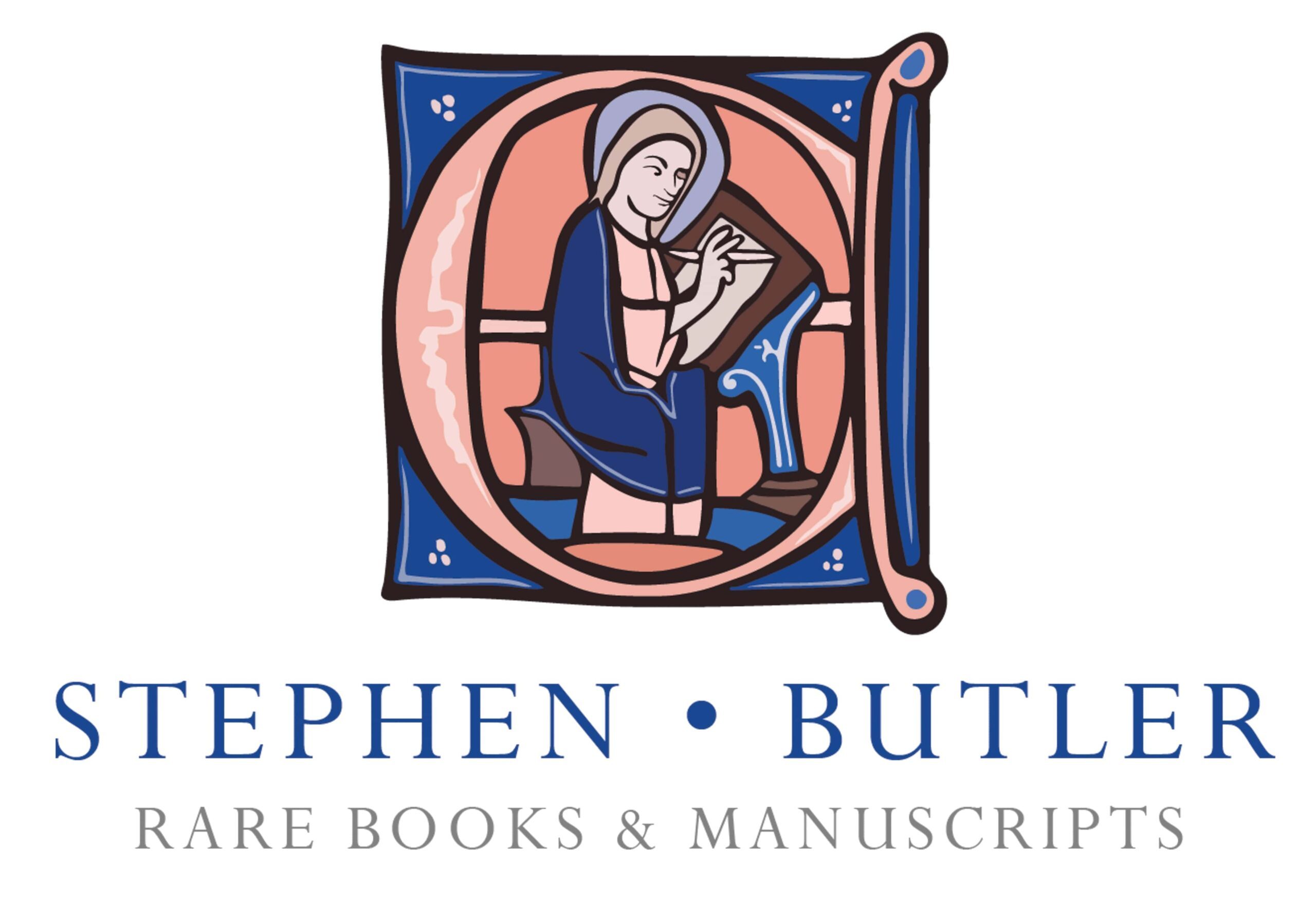
![The Annunciation to Zechariah, on a bifolium from an Antiphonary, in Latin [Germany or Austria, (mid-?)15th century] The Annunciation to Zechariah, on a bifolium from an Antiphonary, in Latin [Germany or Austria, (mid-?)15th century]](https://butlerrarebooks.co.uk/wp-content/uploads/2021/04/IMG_0977.jpg)
![The Annunciation to Zechariah, on a bifolium from an Antiphonary, in Latin [Germany or Austria, (mid-?)15th century] The Annunciation to Zechariah, on a bifolium from an Antiphonary, in Latin [Germany or Austria, (mid-?)15th century]](https://butlerrarebooks.co.uk/wp-content/uploads/2021/04/IMG_0769.jpg)
![The Annunciation to Zechariah, on a bifolium from an Antiphonary, in Latin [Germany or Austria, (mid-?)15th century] The Annunciation to Zechariah, on a bifolium from an Antiphonary, in Latin [Germany or Austria, (mid-?)15th century]](https://butlerrarebooks.co.uk/wp-content/uploads/2021/04/IMG_0770.jpg)
![The Annunciation to Zechariah, on a bifolium from an Antiphonary, in Latin [Germany or Austria, (mid-?)15th century] The Annunciation to Zechariah, on a bifolium from an Antiphonary, in Latin [Germany or Austria, (mid-?)15th century]](https://butlerrarebooks.co.uk/wp-content/uploads/2021/04/IMG_0771.jpg)
![The Annunciation to Zechariah, on a bifolium from an Antiphonary, in Latin [Germany or Austria, (mid-?)15th century] The Annunciation to Zechariah, on a bifolium from an Antiphonary, in Latin [Germany or Austria, (mid-?)15th century]](https://butlerrarebooks.co.uk/wp-content/uploads/2021/04/IMG_0772.jpg)
![The Annunciation to Zechariah, on a bifolium from an Antiphonary, in Latin [Germany or Austria, (mid-?)15th century] The Annunciation to Zechariah, on a bifolium from an Antiphonary, in Latin [Germany or Austria, (mid-?)15th century]](https://butlerrarebooks.co.uk/wp-content/uploads/2021/04/IMG_0773.jpg)
![The Annunciation to Zechariah, on a bifolium from an Antiphonary, in Latin [Germany or Austria, (mid-?)15th century] The Annunciation to Zechariah, on a bifolium from an Antiphonary, in Latin [Germany or Austria, (mid-?)15th century]](https://butlerrarebooks.co.uk/wp-content/uploads/2021/04/IMG_0774.jpg)
![The Annunciation to Zechariah, on a bifolium from an Antiphonary, in Latin [Germany or Austria, (mid-?)15th century] The Annunciation to Zechariah, on a bifolium from an Antiphonary, in Latin [Germany or Austria, (mid-?)15th century]](https://butlerrarebooks.co.uk/wp-content/uploads/2021/04/IMG_0775.jpg)
![The Annunciation to Zechariah, on a bifolium from an Antiphonary, in Latin [Germany or Austria, (mid-?)15th century] The Annunciation to Zechariah, on a bifolium from an Antiphonary, in Latin [Germany or Austria, (mid-?)15th century]](https://butlerrarebooks.co.uk/wp-content/uploads/2021/04/IMG_0776.jpg)
![The Annunciation to Zechariah, on a bifolium from an Antiphonary, in Latin [Germany or Austria, (mid-?)15th century] The Annunciation to Zechariah, on a bifolium from an Antiphonary, in Latin [Germany or Austria, (mid-?)15th century]](https://butlerrarebooks.co.uk/wp-content/uploads/2021/04/IMG_0973.jpg)
![The Annunciation to Zechariah, on a bifolium from an Antiphonary, in Latin [Germany or Austria, (mid-?)15th century] The Annunciation to Zechariah, on a bifolium from an Antiphonary, in Latin [Germany or Austria, (mid-?)15th century]](https://butlerrarebooks.co.uk/wp-content/uploads/2021/04/IMG_0974.jpg)
![The Annunciation to Zechariah, on a bifolium from an Antiphonary, in Latin [Germany or Austria, (mid-?)15th century] The Annunciation to Zechariah, on a bifolium from an Antiphonary, in Latin [Germany or Austria, (mid-?)15th century]](https://butlerrarebooks.co.uk/wp-content/uploads/2021/04/IMG_0975.jpg)
![The Annunciation to Zechariah, on a bifolium from an Antiphonary, in Latin [Germany or Austria, (mid-?)15th century] The Annunciation to Zechariah, on a bifolium from an Antiphonary, in Latin [Germany or Austria, (mid-?)15th century]](https://butlerrarebooks.co.uk/wp-content/uploads/2021/04/IMG_0976.jpg)
![The Annunciation to Zechariah, on a bifolium from an Antiphonary, in Latin [Germany or Austria, (mid-?)15th century] The Annunciation to Zechariah, on a bifolium from an Antiphonary, in Latin [Germany or Austria, (mid-?)15th century]](https://butlerrarebooks.co.uk/wp-content/uploads/2021/04/IMG_0978.jpg)
![The Annunciation to Zechariah, on a bifolium from an Antiphonary, in Latin [Germany or Austria, (mid-?)15th century] The Annunciation to Zechariah, on a bifolium from an Antiphonary, in Latin [Germany or Austria, (mid-?)15th century]](https://butlerrarebooks.co.uk/wp-content/uploads/2021/04/IMG_0979.jpg)
![The Annunciation to Zechariah, on a bifolium from an Antiphonary, in Latin [Germany or Austria, (mid-?)15th century] The Annunciation to Zechariah, on a bifolium from an Antiphonary, in Latin [Germany or Austria, (mid-?)15th century]](https://butlerrarebooks.co.uk/wp-content/uploads/2021/04/IMG_0980.jpg)
![The Annunciation to Zechariah, on a bifolium from an Antiphonary, in Latin [Germany or Austria, (mid-?)15th century] The Annunciation to Zechariah, on a bifolium from an Antiphonary, in Latin [Germany or Austria, (mid-?)15th century]](https://butlerrarebooks.co.uk/wp-content/uploads/2021/04/IMG_0981.jpg)
![The Annunciation to Zechariah, on a bifolium from an Antiphonary, in Latin [Germany or Austria, (mid-?)15th century] The Annunciation to Zechariah, on a bifolium from an Antiphonary, in Latin [Germany or Austria, (mid-?)15th century]](https://butlerrarebooks.co.uk/wp-content/uploads/2021/04/IMG_0982.jpg)
![The Annunciation to Zechariah, on a bifolium from an Antiphonary, in Latin [Germany or Austria, (mid-?)15th century] The Annunciation to Zechariah, on a bifolium from an Antiphonary, in Latin [Germany or Austria, (mid-?)15th century]](https://butlerrarebooks.co.uk/wp-content/uploads/2021/04/IMG_0983.jpg)
![The Annunciation to Zechariah, on a bifolium from an Antiphonary, in Latin [Germany or Austria, (mid-?)15th century] The Annunciation to Zechariah, on a bifolium from an Antiphonary, in Latin [Germany or Austria, (mid-?)15th century]](https://butlerrarebooks.co.uk/wp-content/uploads/2021/04/IMG_0984.jpg)



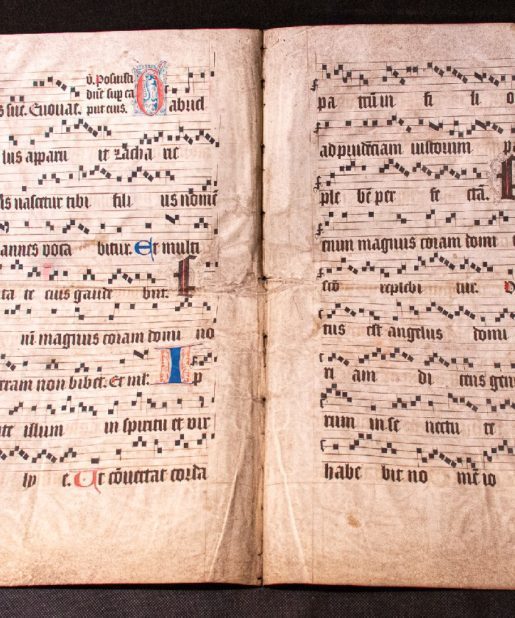

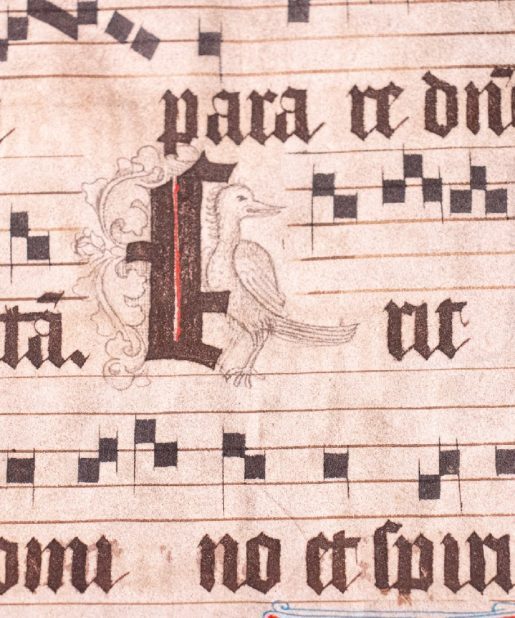










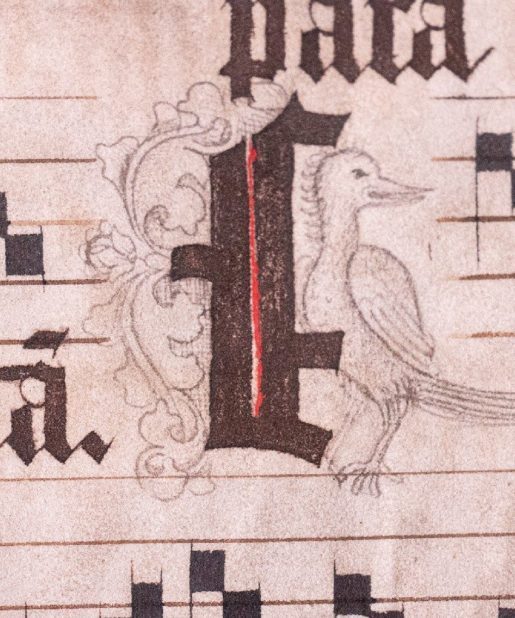



![The Annunciation to Zechariah, on a bifolium from an Antiphonary, in Latin [Germany or Austria, (mid-?)15th century] The Annunciation to Zechariah, on a bifolium from an Antiphonary, in Latin [Germany or Austria, (mid-?)15th century]](https://butlerrarebooks.co.uk/wp-content/uploads/2021/06/IMG_2101-scaled-100x100.jpg)
![The Annunciation to Zechariah, on a bifolium from an Antiphonary, in Latin [Germany or Austria, (mid-?)15th century] The Annunciation to Zechariah, on a bifolium from an Antiphonary, in Latin [Germany or Austria, (mid-?)15th century]](https://butlerrarebooks.co.uk/wp-content/uploads/2021/04/IMG_0688-100x100.jpg)



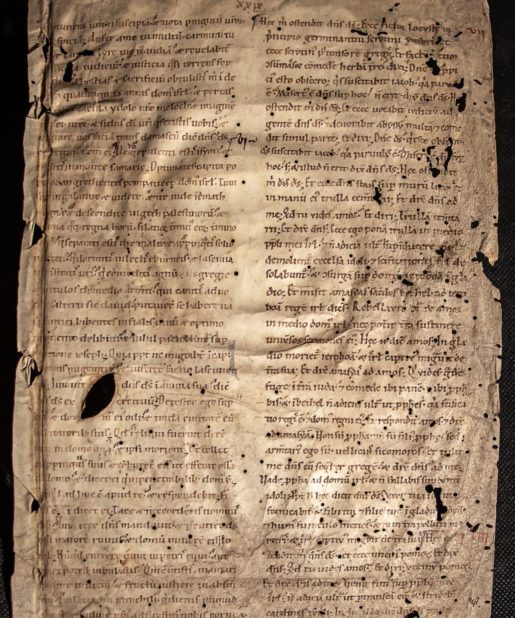


![The Model for 15th-Century Humanistic Script and Decoration – A large bifolium from a decorated Lectionary, in Latin [Italy, 12th century, first half] The Model for 15th-Century Humanistic Script and Decoration – A large bifolium from a decorated Lectionary, in Latin [Italy, 12th century, first half]](https://butlerrarebooks.co.uk/wp-content/uploads/2021/04/IMG_0688-515x618.jpg)
![The Model for 15th-Century Humanistic Script and Decoration – A large bifolium from a decorated Lectionary, in Latin [Italy, 12th century, first half] The Model for 15th-Century Humanistic Script and Decoration – A large bifolium from a decorated Lectionary, in Latin [Italy, 12th century, first half]](https://butlerrarebooks.co.uk/wp-content/uploads/2021/04/IMG_0686-515x618.jpg)


![The Trinity, by Nikolaus Bertschi the Elder or his workshop, on a leaf from a large Antiphonary in Latin [Germany (Augsburg), 16th century (c.1520–30)] The Trinity, by Nikolaus Bertschi the Elder or his workshop, on a leaf from a large Antiphonary in Latin [Germany (Augsburg), 16th century (c.1520–30)]](https://butlerrarebooks.co.uk/wp-content/uploads/2021/12/IMG_9428-515x618.jpg)
![The Trinity, by Nikolaus Bertschi the Elder or his workshop, on a leaf from a large Antiphonary in Latin [Germany (Augsburg), 16th century (c.1520–30)] The Trinity, by Nikolaus Bertschi the Elder or his workshop, on a leaf from a large Antiphonary in Latin [Germany (Augsburg), 16th century (c.1520–30)]](https://butlerrarebooks.co.uk/wp-content/uploads/2021/12/A59I9609-515x618.jpg)
![Commentary on Aristotle, Categoriae, and the same authors translation of Perihermenias BOETHIUS [MS] C.13th Commentary on Aristotle, Categoriae, and the same authors translation of Perihermenias BOETHIUS [MS] C.13th](https://butlerrarebooks.co.uk/wp-content/uploads/2013/08/IMG_8383-515x618.jpg)
![Commentary on Aristotle, Categoriae, and the same authors translation of Perihermenias BOETHIUS [MS] C.13th Commentary on Aristotle, Categoriae, and the same authors translation of Perihermenias BOETHIUS [MS] C.13th](https://butlerrarebooks.co.uk/wp-content/uploads/2013/08/IMG_8379-515x618.jpg)

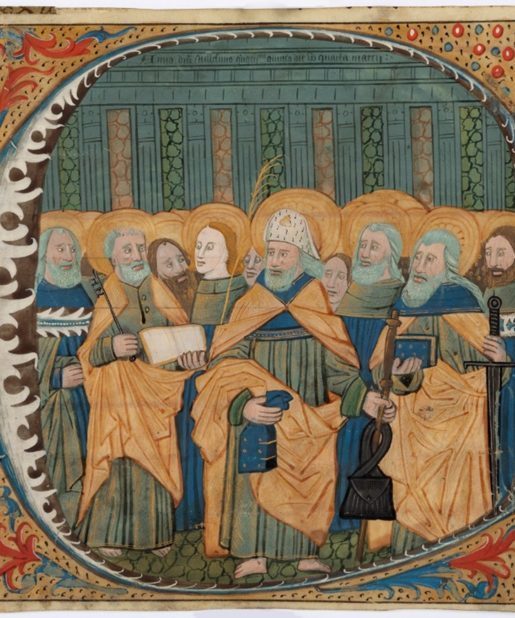
Reviews
There are no reviews yet.